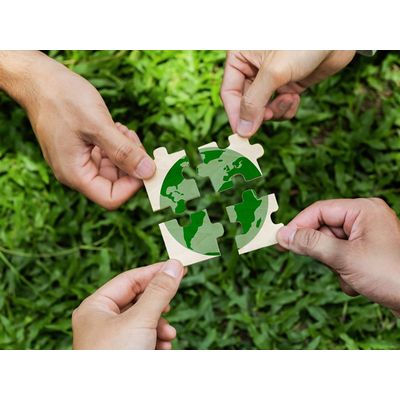

- Home
- Companies
- Beston Group Co., Ltd.
- Articles
- Combatting Ocean Plastic Pollution: The ...

Combatting Ocean Plastic Pollution: The Role of Pyrolysis Technology
The global ocean plastic pollution crisis has reached a critical point. Every year, millions of tons of plastic waste end up in the oceans, threatening marine life, disrupting ecosystems, and creating long-term environmental consequences. Traditional waste management and recycling methods have proven insufficient in addressing the sheer volume of plastic waste, particularly in coastal regions and developing countries. Pyrolysis technology offers a promising solution to mitigate this issue by transforming plastic waste into valuable products while reducing its environmental impact.
Plastic Waste: A Growing Threat to Oceans
Plastic waste in the oceans is one of the most pressing environmental challenges of the modern age. Studies estimate that over 8 million tons of plastic enter the ocean every year. This plastic pollution comes in various forms, from large pieces of debris to microplastics, which are ingested by marine organisms and accumulate in the food chain. The consequences are profound, with wildlife suffering from ingestion, entanglement, and habitat destruction. Furthermore, plastic waste in the oceans releases harmful chemicals into the water, further degrading marine ecosystems and contributing to biodiversity loss.
While efforts to reduce plastic consumption, promote recycling, and clean up ocean waste are underway, the scale of the problem remains overwhelming. To significantly reduce the amount of plastic waste entering the oceans, more advanced technologies need to be developed and implemented on a large scale. This is where pyrolysis technology steps in.
How Pyrolysis Technology Works
Pyrolysis is a thermochemical process that decomposes organic materials in the absence of oxygen, typically at elevated temperatures. When applied to plastic waste, plastic into fuel machine breaks down the polymers into smaller molecules, resulting in three primary by-products: pyrolysis oil, pyrolysis gas, and carbon black. These products can then be utilized as fuel or raw materials in various industries, providing both environmental and economic benefits.
The pyrolysis process begins by feeding plastic waste into a reactor, where it is heated to temperatures typically between 300°C to 900°C. In the absence of oxygen, the plastic materials do not combust but instead break down into useful by-products. This method is highly efficient for handling a wide range of plastics, including those that are difficult to recycle through traditional means, such as multi-layered plastics or mixed plastic waste.
Transforming Ocean Plastic Waste into Valuable Resources
The potential of pyrolysis technology to address the ocean plastic pollution crisis lies in its ability to convert discarded plastic into useful and valuable products. Pyrolysis oil, the primary liquid product, can be used as an alternative fuel source in power plants or even refined into more refined petroleum products, such as diesel and gasoline. This reduces the need for fossil fuels and helps in the circular economy model by reintroducing waste into the production cycle.
Pyrolysis gas, which consists of volatile hydrocarbons, can be used to power the pyrolysis process itself, thereby making the system more energy-efficient and reducing external energy needs. In many advanced pyrolysis units, the gas is captured and reused, further improving the overall sustainability of the technology.
Carbon black, another by-product of pyrolysis, is a versatile material used in the manufacturing of rubber, plastics, and even in the electronics industry. This makes it a valuable commodity in industrial sectors, contributing to both economic returns and waste reduction. As the demand for sustainable alternatives to traditional carbon black increases, the potential for pyrolysis technology to create high-quality carbon black from ocean plastic waste becomes even more promising.
Reducing Plastic Waste at Scale
One of the most significant challenges in addressing ocean plastic pollution is the sheer scale of the issue. Millions of tons of plastic waste are generated each year, and traditional recycling methods cannot keep up with the volume. Pyrolysis technology offers a scalable solution that can process large quantities of plastic waste, converting it into useful products without the need for complex sorting or preprocessing.
Pyrolysis can be deployed in regions heavily affected by plastic pollution, such as coastal areas or locations near major shipping lanes. Waste plastic can be collected from the oceans or coastal areas and processed in mobile or stationary pyrolysis units, reducing the amount of plastic waste that reaches the ocean in the first place. This decentralized approach is critical, as it can be tailored to local waste management infrastructure and needs.
Additionally, pyrolysis technology can process a wide variety of plastic types, including mixed plastics, which are often not accepted in conventional recycling streams. This increases the potential for large-scale waste conversion, particularly in regions where plastic recycling infrastructure is lacking or underdeveloped.
Environmental and Economic Benefits
The environmental benefits of pyrolysis technology are substantial. By converting plastic waste into valuable products, pyrolysis reduces the need for landfilling and incineration, both of which contribute to pollution and greenhouse gas emissions. The process also helps mitigate the release of microplastics into the ocean by reducing the amount of plastic waste in circulation.
Economically, the by-products of pyrolysis—particularly oil and carbon black—are highly sought after in various industries. As global demand for sustainable materials and fuels continues to rise, the financial viability of pyrolysis systems improves. This creates an economic incentive for governments, businesses, and non-governmental organizations to invest in and scale pyrolysis technology as a solution to the ocean plastic crisis.
Furthermore, the potential for job creation in the pyrolysis industry cannot be overlooked. The development, construction, and operation of pyrolysis plants require skilled labor, providing new employment opportunities in regions affected by plastic waste. This contributes to the local economy and supports the transition to a more sustainable, circular economy.
Scaling Pyrolysis for Global Impact
For pyrolysis technology to play a significant role in solving the ocean plastic pollution crisis, it needs to be implemented at scale. This requires investment in research and development to improve efficiency, reduce costs, and expand the capacity of pyrolysis systems. Additionally, it calls for the establishment of robust waste collection and processing systems, particularly in coastal regions where plastic waste accumulates.
Governments, environmental organizations, and private companies all have a role to play in scaling pyrolysis technology. Policy support, such as incentives for adopting waste-to-energy technologies, as well as public-private partnerships, can help accelerate the deployment of pyrolysis systems and increase their impact on reducing ocean plastic pollution.
